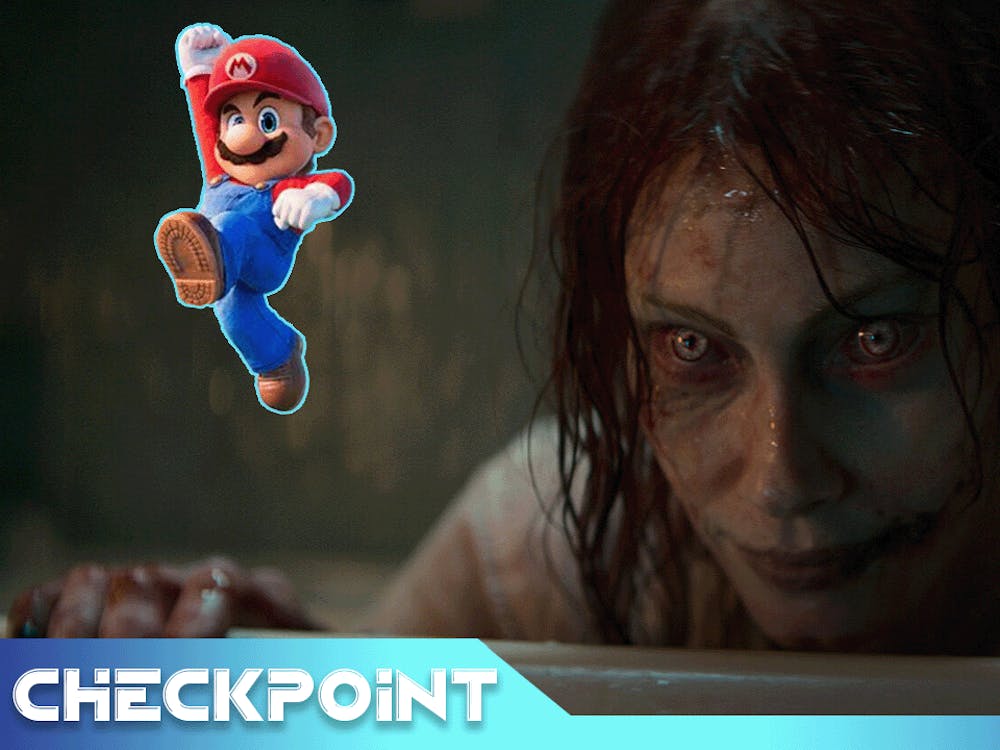The opinions and views expressed in this article are those of the author and do not reflect the opinion of Byte or Byte’s editorial board.
Author's Note: I played World of Goo 2 on a Lenovo IdeaPad Flex 5 laptop for this review. I purchased the bundled copy of the PC versions of both World of Goo and World of Goo 2.
When the first teaser trailer for World of Goo 2 dropped at the 2023 Game Awards, I was one of seemingly few who was absolutely ecstatic. I have many fond childhood memories of standing in my living room pointing a Wii remote at the TV screen carefully grabbing goo balls to make bridges and towers that would make any civil engineer sob because of just how unstable they were. My hopes and expectations for this second game were extremely—and to be honest, unfairly—high. There could be no sequel that would truly live up to the original World of Goo in my nostalgia-riddled mind, but World of Goo 2 got as close as it possibly could.
The Last of the Goo Balls Are Back Once More
World of Goo 2 is the sequel to the indie-darling 2008 game, World of Goo, from 2DBOY and Tomorrow Corporation. These physics puzzle games involve using little beady-eyed goo balls to build structures in order to reach a pipe that will suck up any remaining loose goo balls. A level is successfully completed if at least a certain number of goo balls are collected. Each level also has three optional, and difficult OCD—Obsessive Completion Distinction—challenges that do not impact game completion percentage. These criteria involve collecting many more than the required number of goo balls, completing the level in a limited number of moves, and completing it in a short time period.

World of Goo 2 character looking through a telescope. In-game screen capture taken by Annika Sharlow.
World of Goo 2 is divided into five themed worlds, or “chapters,” with varying numbers of levels in each. Levels are kept interesting with varied types of goo balls—denoted by distinct shapes and colors—that have different behaviors and impact building in new ways. Green goo balls are able to be moved and put somewhere else in the structure, new-to-the-sequel conduit goo balls are able to carry liquid goo from elsewhere in the level, and red goo balls act as fuses when in contact with molten steel.
A Gorgeous Game, Even Without Beauty Goos
The visuals in this game are stunning. The original had some beautiful level backgrounds, “Blustery Day” comes to mind, but unsurprisingly there have been drastic graphic improvements since 2008. The levels feel cohesive within each world without the scenery looking too repetitive. The third chapter of the game, “Atomic Express,” is filled with gritty machinery and molten steel against a background of the gorgeous purple skies of a winter sunset. Every time I started a new level, I took time before figuring out the puzzle to just look around and appreciate the scenery. The simple jagged-line, paper doll art style of the first game’s cutscenes is back, and these silly cutscenes continue to help tell the game’s story in a visually interesting way.
The eyes on the goo balls and their movement make them feel truly alive. Unfortunately, this feature has the side effect of making me feel incredibly guilty anytime they need to be liquified for level completion or when I accidentally drop them into sharp spikes and red-hot boiling steel. The level of empathy I have for small goo balls with eyes as I play is unreasonable, but I recognize that’s on me not the developers.
There is one section of the game that takes an impressive risk by making a sharp turn away from the anticipated style into something completely unexpected. It is hard to say more without spoiling one of the best parts of the game, but “The Black Stain” is incredibly designed both visually and in terms of game mechanics. This section alone is enough for the game to be worth purchasing.
A Big Goo Pipe to Fill
World of Goo 2 being a sequel means it will be compared to its predecessor; there were always going to be elements I preferred from the original game I played as a child. One example of this beyond the storytelling is that while I enjoyed World of Goo 2’s soundtrack, it relied too heavily on musical motifs from the original. I love the first game’s music, so I would’ve preferred to get great new pieces rather than those meant to appeal to a nostalgic player base.
Replaying the original game for the first time in years after finishing the sequel made me realize that the puzzle mechanics were drastically improved in the sequel. Also with the new game, I experienced no frame rate drops, and it did not cause my laptop to become overheated like the PC version of the original does.

Word of Good 2 chapter 3 title screen. In-game screen capture taken by Annika Sharlow.
The physics of the goo ball structures feels more intuitive now. Your goo structures no longer shrink and expand unpredictably after you place a new goo ball. They stay basically in the same spot you put them in. The developers have made it so goo balls no longer accidentally launch themselves off of platforms and into harm's way for seemingly no reason, an incredibly annoying issue from the original. They have also adjusted the physics of the water, which acted more like a trampoline throwing goo balls and aggressively rotating your goo structures than real water. The tiny white bugs that float around the screen allowing you to undo the last move made are now unlimited on every level, something I unfortunately didn’t realize changed from the original until the final chapter. The vacuum power of the pipes at the end of each level has thankfully increased. A precarious tower that is actively crumbling as I reach the pipe is now much more likely to be held up by the force of goo-ball-sucking than before.
The only mechanic I miss from the original is the ability to call goo balls to a given area with a whistle. After unlocking it, you could hold down on the screen, a little flute tune would play, and all goo balls would hastily head in that direction. The goo balls in World of Goo 2 now naturally crowd around where you last placed a goo in the structure. This is helpful for building until you need to light a fuse and all the goo balls you want to collect burn to death before they can reach the pipe because they wanted to be near their most recently placed friend. I just want the ability back to have most of my goo near the pipe before I explode half of my built structure.
Don’t Worry, It’s Sustainable Now
Despite being a seemingly simple puzzle game, the original World of Goo was a commentary on many issues such as consumerism, the commodification of beauty, data farming, pollution and, industrialism, all with a comedic twist. This game follows in its predecessor’s footsteps in terms of social commentary by amusingly critiquing large corporations, greenwashing, and, ironically, sequels.
The story unfortunately felt a bit weaker overall, especially when compared to what it was following. The signs created by the unseen character of the sign painter remained just as witty as they provided world-building information, advice on completing the level and, humor. The meta-commentary on cash grab video game sequels was done well without feeling too contrived. The real issue with the story is the underdevelopment of the greenwashing critique. It was a theme heavily focused on in cutscenes and in the more story-heavy levels, but it never felt particularly interesting or like the game had much to say on the topic. There was such a large focus on pollution and the industrialism of large corporations in the original game, so I was left wanting more on companies falsely rebranding as sustainable.
Maybe I’m Just Not a Good Gamer but…
World of Goo 2 is a more challenging game than the original. World of Goo’s 48 levels took me 5 hours and 15 minutes to complete - an average level completion time of 6.56 minutes. On the other hand, the sequel’s 60 levels took me 11 hours and 40 minutes, or an average of 11.46 minutes per level, to complete.

World of Goo 2 creature. In-game screen capture taken by Annika Sharlow.
To be fair to my average, in both games, outlier levels were heavily impacting my level completion time by quite a bit. In the original, these would be “You Have To Explode The Head” and “Water Lock” which combined probably took at least 40 minutes. For the sequel, the level “The Ground Shakes” took up at least 8.5% of my playthrough. I will say that this level is technically completely skippable to win the game and is intentionally very difficult.
There was a heavier focus on quick-time events in the sequel when compared to the original. Several levels could only be won by continually placing goo balls as fast as you can as your structure bows and collapses in on itself. I couldn’t find a better way to build the structure to be more sound for longer, I just had to have better timing. I feel some of these levels would have been so much harder or nearly impossible if I wasn’t using a laptop with a mouse and instead aimed at the screen with a controller. In a puzzle game, I don’t want to have to constantly redo levels for speed-based reasons. Let me be bad at gaming.
I loved playing the original game as a young child on the Nintendo Wii. It was a game that I was capable of winning by myself, or at least with not too much help, at the time—which was not the case for all games I used to play. I want kids now to be able to have the same type of experience with the new game—plus, they’ll have the added benefit of beautiful graphics. I was more than able to play and win the sequel as an adult, but I fear that the focus on quickly placing goo balls rather than logically coming up with puzzle solutions would have made it very frustrating and difficult for child-aged me.

Sources: Youtube, WorldofGoo2, GameAwards, 2DBOY, TomorrowCorporation
Photos: In-game screenshots
Contact Annika Sharlow with comments at aqsharlow@bsu.edu or on Instagram @annika_sharlow




















